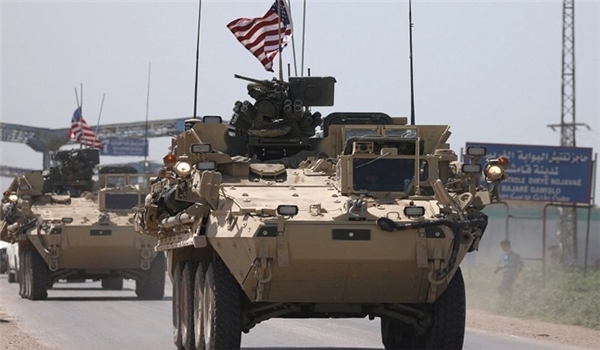
RNA - First: On Tuesday, Maj. Gen. Qassem Soleimani, commander of Iran’s IRGC Quds Force, sent the news of the end of ISIL as a caliphate and pseudo-state to Iran’s Leader Ayatollah Seyed Ali Khamenei. He said he was speaking on behalf of all the forces fighting terrorism and the thousands of Iranians, Iraqis, Syrians, Lebanese, Afghans, and Pakistanis who had died in the war against terrorism. He said it was Iran’s support, coupled with the forces of the Hashd al-Shaabi, that helped Iraq and Syria defeat the foreign-backed terrorist group.
Second: Syria has welcomed the closing statement of a trilateral summit of Iran, Russia, and Turkey which calls for a political settlement of the conflict in the war-torn country. The political step respects the sovereignty, independence and territorial integrity of Syria and contributes to sparing the blood of the Syrian people. The statement was released following a meeting between Iranian President Hassan Rouhani, Turkish President Recep Tayyip Erdogan, and Russian President Vladimir Putin in the Black Sea resort of Sochi.
They stressed the determination of the three countries to continue working together to help restore peace in Syria and praised their cooperation aimed at safeguarding a ceasefire in Syria that came during the intra-Syrian talks brokered by the three countries in the Kazakh capital, Astana. The three leaders also agreed to a congress of Syria's government and opposition forces to be held in Sochi.
It means what it means. The presence of US occupying forces in Syria on the pretext of fighting ISIL is not endorsed by Damascus and its allies. It will only lead to more harrowing civilian losses and humanitarian catastrophes by US-led airstrikes – a trend which continues to receive relatively little international press coverage.
This is while Airwars reports that civilian casualties because of US-led airstrikes in both Iraq and Syria remain near historic highs. During October alone, Airwars estimates that at least 301 non-combatants were killed by US-led coalition strikes – a figure still higher than at any point prior to March 2017. All but one of the 39 casualty events assessed as carried out by the US-led coalition tracked in October took place in Syria.
Also according to the UN, the five month operation by the US and proxies to capture Raqqa from ISIL has left 80% of the city uninhabitable. Airwars monitored at least 266 deaths in Raqqa during the month that were due to US strikes - a 9% rise from September. In total, Airwars now estimates that more than 1,450 civilians were killed by US strikes in Raqqa.
To add insult to injury, the Trump administration is expanding its goals in Syria beyond fighting ISIL to include what it claims a political settlement of the war, but a dangerous and potentially open-ended occupation that could draw the US into conflict with both Syria and Iran, whose forces are now bearing down on the last militant-controlled desert regions, as well as Russia.
All things considered, the full defeat of ISIL in Syria is imminent - along with an end to the US justification for being there. The War Party is not using the ongoing presence of American troops in northern Syria to rout ISIL. It is using it in support of the Kurdish proxy forces and their secessionist agenda. The plan is to put pressure on the Syrian government, prevent full liberation of the country by allied forces, establish new local governance for proxies, and use the ongoing presence of American troops to force political concessions from Damascus.
Russian air power and Iranian-allied ground forces, however, have sharply turned the situation to Syria’s advantage both on the battlefield and at the negotiating table. Russia and Iran have also indicated they plan to stay. This would ensure that ISIL remnants are mopped up and that repopulated communities are stabilized under central governance, making US objectives even harder to achieve.
847/940